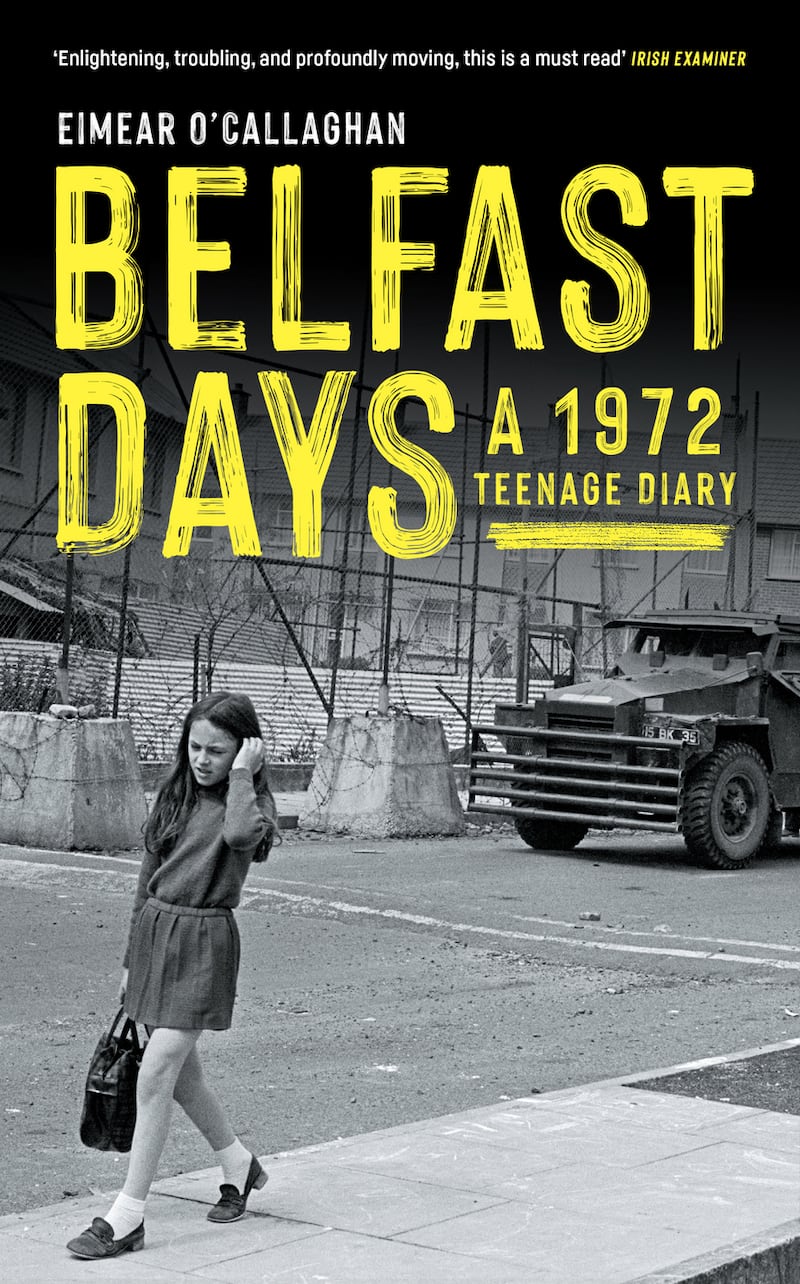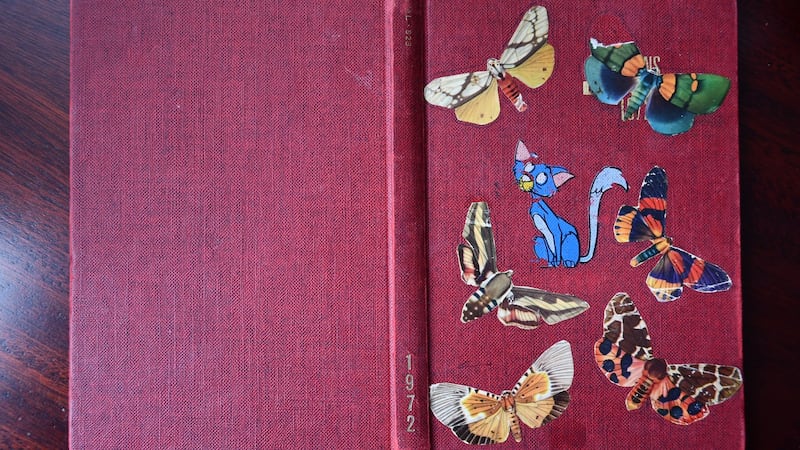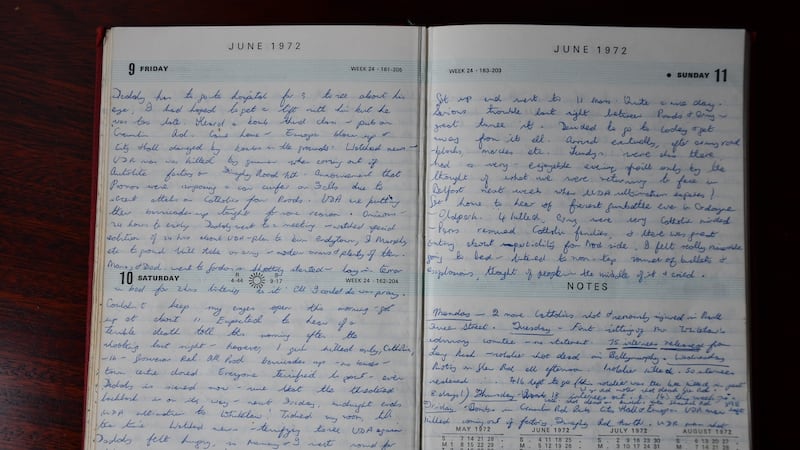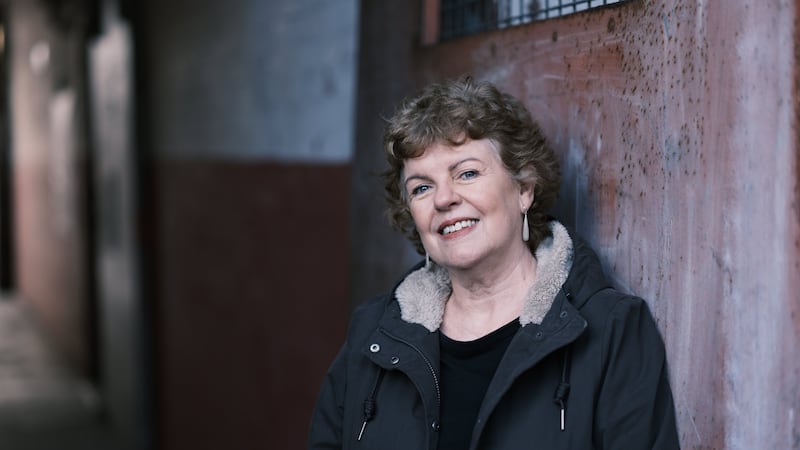The dedication at the end of Kenneth Branagh’s Oscar-nominated film Belfast states that it’s “For the ones who stayed, for the ones who left and for all the ones who were lost.” Unlike the parents of the film’s protagonist, nine-year-old Buddy, my family were among “the ones who stayed” – people for whom fleeing the Troubles was never an option.

In Belfast Days: A 1972 Teenage Diary, I recount one year of my life as an ordinary Catholic schoolgirl in the turbulent city that Buddy escaped. On New Year’s Day 50 years ago, I settled into a corner of my tiny west Belfast bedroom, clutching my precious new Collins diary, and began to write. The moment marked the start of a routine I would follow most nights of that year, filling page after page as the city of my birth convulsed in violence.
In an age before Instagram and Snapchat, it wasn’t unusual for 16-year-olds like me to keep a journal, and like all diarists – except perhaps politicians – I never intended nor imagined that my jottings would become public. As the world around me grew frightening and claustrophobic, the diary became my confidante, the repository of my hopes and fears, and a contemporaneous account of the most violent year in Northern Ireland’s 30-year conflict.
Bloody Sunday, Bloody Friday, Aldershot, the Abercorn, Claudy, Dublin: the brutal attacks associated with those days and places claimed more than 40 lives and garnered international headlines. Another 450 people were killed that same year, their lives swept away by the relentless tide of violence. In my final entry, on New Year’s Eve, I wrote in tears, “Everyone too afraid to go out now. I hate Belfast! Just hope that I and the rest of the family are still here this time next year.”
I closed the diary and forgot about its existence as I moved between cities and homes and juggled being a wife and mother with a journalistic career lasting more than thirty years.

I rediscovered my journal in 2010 during a clear-out that coincided with the end of my fulltime journalism. Opening its battered red cover, festooned with pasted-on paper butterflies, I flicked through 200 pages packed tight with schoolgirl script. Marvelling at my teenage discipline, I prepared to cringe and laugh at my grievances and obsessions, my accounts of family gatherings.
The word “gun” caught my eye in an entry in May and I began to read on. Nothing had prepared me for the terror, distress and sadness that spilled from those yellowing pages where, in nerdish detail, I’d chronicled killings, shootings, explosions and political upheaval alongside my teenage angst.
I didn’t recognise the terrified child who’d recorded going to bed “…convinced that prayer is our only hope, seeing we haven’t got a gun.” Hours after the horror of Bloody Sunday, I had written about British soldiers telling “lie after lie” on the evening news and about my certainty that there’d be “serious trouble”. Surely the stroppy schoolgirl who’d burst into tears when her young brother taunted her about her horrible haircut couldn’t be the same person who reflected in December that “No longer is anyone unlikely to get shot.”
I struggled to understand how I became obsessed with getting my hands on a pair of “strides” – the latest fashion in flared trousers – while the peaceful society I’d grown up in teetered on the brink of civil war. I deplored the violence that deprived me of a “normal” life, prompting me to record in an entry in November: “I hate Belfast, I’m sick of the Troubles. All I feel is despair that we’ve been sold out and that soon we’ll all be butchered by the UDA/UVF.”

Happening upon such entries for the first time as an adult, I was shocked by how much I’d forgotten. I was bewildered by how the passage of time had diminished my recollections of the savagery of that era. My diary’s power to revive long-forgotten horrors stunned me. With the benefit of mature reflection, I was shamed by what I had failed to acknowledge as a teenager.
In writing Belfast Days, I set out to tell the story of the most violent year of the Troubles from the point of view of one young girl who happened to be born in a traditional Catholic family and went to school on the Falls Road. I didn’t propose a lurid revisiting of the unprecedented brutality of 1972 but hoped instead to shed light on how families like mine, “the ones who stayed,” were impacted by circumstances beyond their control.
Belfast Days acknowledges the resilience of the majority of people, nationalists and unionists alike, who forged ahead in the face of appalling difficulties, providing for their families while trying to protect and divert them from the ever-present violence. More than anything, I wanted it to be a reminder of how quickly and viciously our society imploded and to be a warning against taking peace for granted.

Fifty years have passed since I recorded my diary. Last month, the families of those killed on Bloody Sunday marked the events of January 30th, 1972 with a dignified and respectful public commemoration. The coming months will see a succession of 50th anniversary commemorations – some public but most of them private – remembering almost 500 people who also died through violence that year. Grief is a legacy of our past.
Since the killings stopped nearly 25 years ago, the devolved administration at Stormont has lurched from crisis to crisis but Belfast has been transformed. The likes of “young Buddy” and “the ones who left” wouldn’t recognise the city’s iconic new buildings and gleaming infrastructure, as featured in full colour at the end of Branagh’s film.
Brexit, however, has brought the Border to the fore of Northern politics again. Unionist opposition to the Protocol threatens the future of power-sharing. Belfast Days: A 1972 Teenage Diary reminds those of us who've forgotten, and those too young to remember, of all that's at stake now and what we cannot afford to lose.
A new edition of Belfast Days: A 1972 Teenage Diary by Eimear O'Callaghan is published by Merrion Press.





















